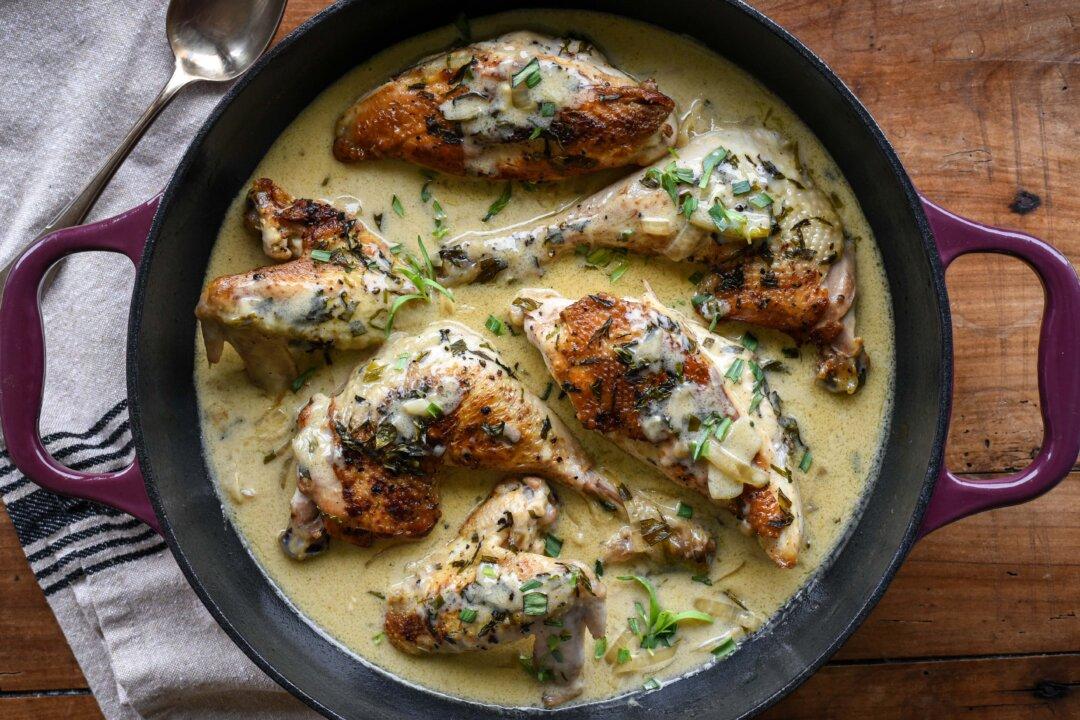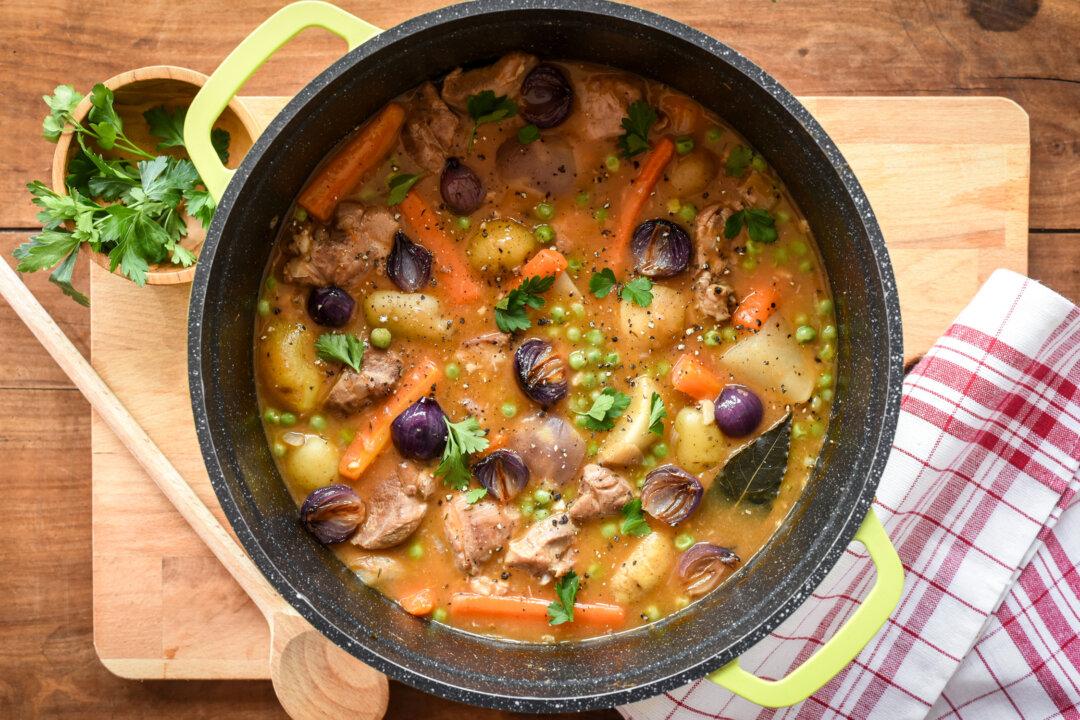Chicken, fresh tarragon, cream, and white wine are no strangers to a French kitchen, and they all come together wonderfully in this classic French bistro dish. Known as “poulet à l’estragon,” French tarragon chicken is a simple, one-pan recipe that’s a little more impressive than your average chicken stew.
With fresh tarragon season running from late spring to early autumn, this recipe is ideal for spring and summer menus, whether a weeknight dinner or a gathering.





